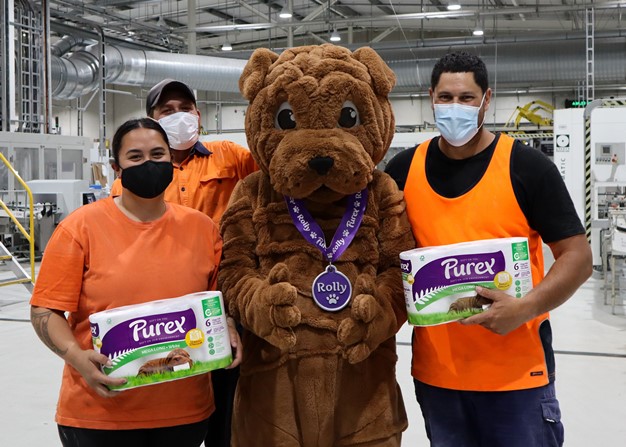NEW Handee paper towel, Purex and Sorbent Toilet Tissue packaging to hit the shelves containing 20% recycled plastic.
As market leading brands in the category, this will be the first recycled plastic packaging seen in the paper towel and toilet paper aisles of New Zealand’s supermarkets. Recycled plastic has been used before and reduces plastics going to landfill, supporting the development of New Zealand’s circular economy.
Essity’s investment into recycled plastic packaging in its Kawerau Mill comes after 18 months of research and trials investigating sustainable packaging options. The Handee, Sorbent and Purex range of products has been transitioning to 20% recycled plastic packaging since October 2021.

“We know New Zealanders are concerned about plastic waste, so we are excited to be making our products available to our customers and consumers with more sustainable packaging. Our research into sustainable packaging options shows that using 20% Post Consumer Recycled (PCR) content in Handee paper towel, Purex and Sorbent Toilet plastic packaging, reduces the carbon footprint of our packaging, contributes to the circular economy and reduces plastic waste,” said Fiona Baxter, General Manager Sustainability for Essity’s Australasian operations.
“From the beginning of the project we chose to follow best practise and drive the circular economy. This meant we chose materials which were not only technically recycled but likely to be collected and recycled at scale. We reviewed paper packaging, but due to issues with contamination at curbside and the lack of local capacity to reprocess we were concerned that this was unlikely to be recycled. Adding post consumer recycled content to our soft plastics packaging drives the circular economy by creating valuable material to be collected and processed.”
Developing this packaging innovation has had many technical hurdles and 20% is just the start of Essity’s journey as they have plans to increase the PCR content.
Essity’s “forest to flush” product lifecycle for these products has been independently reviewed, confirming that packaging contributes less than 10% to the carbon footprint for these products. 20% recycled content in this new packaging reduces the carbon footprint further and moves Essity closer to the sustainable packaging target of 85% recycled and/or renewable content in their packaging by 2025. Essity will save approximately 13 tonnes of virgin plastics per annum by transitioning
to 20% PCR.



